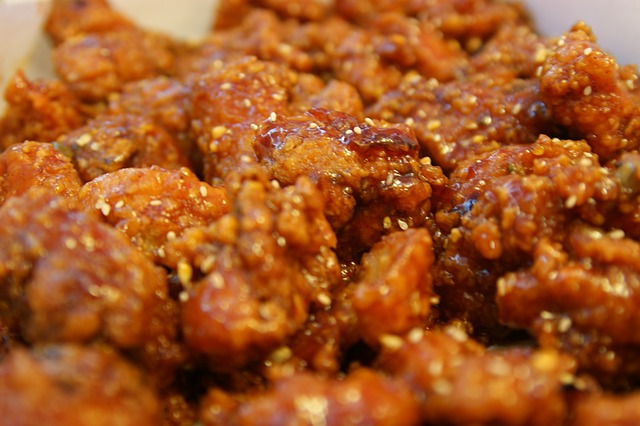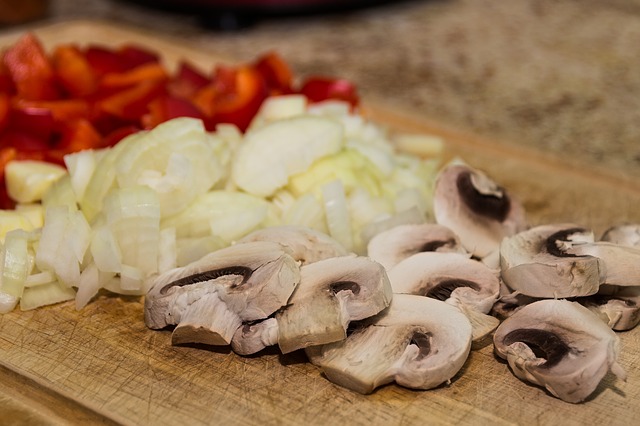
A steak knife is a type of kitchen cutlery that is specifically designed for slicing through steaks and other types of meat. In order to ensure that you’re getting the best possible performance from your knives, it’s important to invest in a set that is made from high-quality materials and has been tested by experts. That’s where our selection of best steak knives consumer reports comes in. We’ve gathered together some of the top-rated knives on the market so that you can find the perfect set for your needs. Whether you’re looking for a heavy-duty option that can handle tougher cuts or something with a sharper edge for precision slicing, we have something for everyone. Plus, our convenient shopping options make it easy to peruse the selections and find the best steak knives for you. Whether you’re just starting out in your adult life or are trying to stock up your kitchen, check out our list of best steak knives consumer reports below!
Top 10 Best Steak Knives to Buy in 2022:
*Note: Score is rated from our Editors and AI.
Table of Contents
Steak Knives
A steak knife is a kitchen knife designed for cutting steak. Steak knives are serrated to cut through the tough, outer layer of meat without tearing or shredding it apart. Many models include an indentation in the blade that makes carving easier after slicing through the steak’s surface.
Steak knives are used in many countries around the world, including Brazil, France, Russia, Germany, Mexico and elsewhere. They are sometimes included in knife sets or sold separately as pocket knives. The idea for creating a special type of knife to cut steak was patented by John Russell Pope in 1929.
What Should I Look For When Buying A Steak Knife?
It’s a question that has been asked by housewives and professional cooks all over the world. You might say an answer doesn’t really matter; it’s just a steak knife after all, right? Well think again! Drawing from my years of experience in this industry, I have experienced some good knives and some bad ones. So here is a quick rundown on how to shop for a new set of steak knives:
– The Steel Type Is Important
We’re not talking about the type displayed on your favorite football team or favorite rock band here. We are talking about the steel itself! For example, 440A vs 420J2 stainless steel types should be one of the first things you look at. Both these types of steels will give your steak knife set a sharp edge and long-lasting resistance to damage and wear, but they are manufactured entirely different so keep this in mind when shopping around for the best set out there.
– How Comfortable Are The Handles?
The next thing I would look at regarding any type of steak knife is the handle itself. It’s important that you find a good balance between comfort and stylish modern design – after all, we want both these features merged together!
– What Kind Of Edge Do You Desire?
This may seem obvious and like it shouldn’t be mentioned, but let me explain: not everyone wants or needs a super sharp blade on their steak knives! Some prefer a smooth and solid edge to cut through their steak while others want a blade with a quick and easy bite to it.
– How Much Maintenance Will Be Required?
You should always look for knives that you won’t be required to do too much maintenance on, such as re-sharpening or removing any debris from the knife after every use. If you’re willing to go through this process then it’s not an issue at all; but if not, don’t get yourself one of those sets!
– Where Is The Set Manufactured?
This is another big factor in making your decision. The best steak knives consumer reports need to maintain a steady quality and strength throughout the entire knife, handle included. Some can produce excellent blades and handles but not maintain a standard in their overall performance. Make sure you do a little bit of research before buying to avoid wasting your money.
I hope this article has been helpful and that it gives you a better understanding of what goes into finding the perfect steak knife set! Have fun shopping around, but remember to keep these few things in mind when narrowing down your selection.
What Makes a Steak Knife Good?
A knife’s purpose is to cut things. That sounds simple enough, but there are actually a lot of things that make one knife suitable for steak and another not so good. The goal here is to teach you what kind of metal makes a good steak knife, how different knives perform the same task, and why I think decent steaks deserve decent knives.
Some disclaimers: This applies mostly to Western-style knives. Other styles have their own peculiarities. I have almost no experience with Japanese knives, so they won’t be covered here on out. If you want to know more about them, it’s best to research them yourself or ask someone who knows more than me (the first option is preferable).
The Balance of a Knife
Balance is the distribution of weight across a knife. A knife can be perfectly balanced and feel light as a feather in your hand, or it could be unbalanced and feel like you’re carrying an extra pound just by holding it. Most quality knives are properly balanced, because it allows for better control during use. Usually the tip has more metal than other parts of the knife, which makes sense when you think about leverage: if the weight distribution isn’t right, then either the blade will fall towards the handle (making cutting hard) or away from it (making cutting dangerously easy).
So what does balance have to do with steak? For one thing, only high-end knives usually achieve proper balance, so any unbalanced knife is probably a lower quality one. The less balanced a knife, the more likely it is to twist in your hand while you’re trying to cut steaks. Also, for high-end knives, balance is generally better when the blade spine is closer to the handle (or at least not way out on the tang). That makes sense: no matter where you hold your steak knife, there will be metal in the right place in relation to your hand and what you’re cutting.
A Balanced Knife
One of my favorite knives when I worked at a steakhouse was this small paring knife; it has an offset blade and perfectly centered balance point when closed. When opened, you can see how light it feels because the weight is concentrated at the tip.
The tang of a knife is its unsharpened back end; it’s what you hold with your fingers when you grip the handle. Some knives have a protrusion called a bolster on one side of the blade that adds balance or protects your hand from getting cut, or both. If a knife has a full tang, then it means it extends all the way through the handle and is secured by rivets on each side. The tang of Western-style the best steak knives consumer reports should be the same length as the handle for proper balance and comfort in use, but can be shorter if they have bolsters to compensate (I’ll explain later).
A Full Tang Knife
In theory, more metal makes for a stronger knife. In practice, though, a full tang might not be the best idea for a steak knife. You see, a full-tang is likely to transfer metal fatigue from the blade area to the handle over time because there’s more metal locked in tension between them. If you’ve ever had a steel hammer break while pounding nails, then you know what I’m talking about. Instead of using a full tang, manufacturers could make knives with an open or closed bolster on one side of the blade–open bolsters allow most Western-style knives to have plenty of metal without any flex in order to keep it strong and sturdy.
An Open Bolster Knife
Blade Geometry
The shape of the cutting edge determines how well your knife can cut through your steak. The most common edge shape is hollow ground, which means that the blade has a concave section towards the cutting edge with a thin area of metal running along it to form an extremely sharp edge (this is sometimes called a “hair-popping” sharpness). Other shapes can be scalloped in order to make them easier to resharpen in the field, but will dull faster in response.
Western-Style Steak Knives should have a Hollow Ground Blade
As I mentioned before, bolsters are used to protect your hand from getting cut or add weight at the end of the blade for balance purposes. If you’re using Western-style steak knives with full tangs and open bolsters, then you probably won’t need the additional weight at the end of the blade because it’s already counterbalanced by other factors (like longer, heavier handles). If you’re using Western-style steak knives with full tangs and closed bolsters, then the bolster could get in your way when you’re cutting. That’s why I prefer to use Western-style steak knives with open bolsters: they give me more control and still have great balance.
Another Blade Geometry
Low-End vs. High-End Steak Knives
You can easily find low-end steak knives for $1 apiece these days; however, they usually only perform adequately for basic tasks like cutting bread or cheese. As mentioned earlier, options often lack proper balance and geometry, and any knife that can cut tomatoes well is probably a decent steak knife.
Cheaper steak knives often perform only adequately
If your budget allows for it, then you should seek out high-end steak knives because they’re balanced better, have more metal in the blade and tang for durability and longevity, and will hold their sharp edge longer than cheaper alternatives. If you go to a specialty steakhouse or butcher shop or order steaks over the phone from your local purveyor of meat products (yum), chances are good that they provide high-end steak knives to patrons as part of their overall product quality. You may view this as pretentious (because it kind of is) unless you know what goes into making great steel: forging, heat-treating/cryo-tempering, grinding, and other processes that bestow the aforementioned qualities upon the steel.
High-End Steak Knives are worth keeping
If you want to keep your knives pristine for as long as possible, then you should use Western-style steak knives with open bolsters. However, if you have a dishwasher or don’t mind using Eastern-style steak knives with full tangs and closed bolsters because they’re more comfortable in your hand (due to their weight), then go right ahead. I’ve found that some stores sell Eastern-style steak knives with full tangs and closed bolsters for less than comparable Western-style the best steak knives consumer reports, so be sure to shop around before you buy.
Also, don’t be intimidated by the elegant appearance of high-end steak knives or their serrated edges: I’ll show you how to keep them sharp and sanitary without much trouble at all . There are a ton of resources online that will help you learn more about knives if you’re interested in what it takes to make one from scratch too. After reading this guide, you should have a good idea as to what makes a great steak knife, so now go out there before your next meal!
FAQs About Best Steak Knives Consumer Reports
What Makes A Steak Knife Bad?
If a knife isn’t sharp enough it will cause the meat to not cut efficiently. This means you will need to apply more pressure when cutting. Using too much force on the steak knife can lead to it breaking or it being dulled, neither are good for eating steak! The handle of a bad steak knife is also important. If the grip doesn’t feel comfortable in your hand then you won’t enjoy using it as much, this leads back to why comfort matters! Lastly, if the appearance of the steak knife isn’t that great then chances are high that you won’t enjoy eating with it. This leads back into why looks matter!
Are There Different Types Of Steak Knives?
Yes there are different types of knives but the differences depend on the brand and where they are made or where they are sold in. There are usually multiple types of steak knives in one pack, you can find serrated and straight blades in various packs. If you have a good set of steak knives then you should be able to interchange the different blades with each other. This is because not every piece of meat is the same shape/thickness, this allows for versatility when cutting different meats!
How Did Steak Knives Get Their Names?
A lot of people wonder how steak knives got their names because it doesn’t make sense why something used to cut meat would be called a knife! The truth behind the name is that back when utensils were first made; they were often made out of materials like wood or metal. The knives back then weren’t sharp enough for meats so they used rocks to help cut the meat off. This is where the term steak comes from, it was a reference that they were using this rock “to stab” or “to stick” into a piece of beef! As knife makers became better and started making sharper blades the name stuck with us today!
How To Use Steak Knives?
When you’re learning how to use the best steak knives consumer reports you will want to begin by holding the knife in your dominant hand. You might need to switch hands depending on if you are left handed or right handed. Hold the handle of the steak knife as well as your fingers against it firmly but not too tight. Make sure your wrist isn’t angled and is straight so you can easily cut through the meat. When cutting, find where it starts to be difficult then slide your hand down as your wrist twists. This will give you a smooth slice that isn’t tough or jagged!
A Good Steak Knife Is:
Sharp It should easily glide through whatever type of meat you’re eating Comfortable In Your Hand Attractive On The Table Can Interchange Different Knives With Each Other
You Should Avoid: A Dull Blade One That Doesn’t Fit In Your Hand (Comfort) A Poorly Designed Handle.
>>> See more: Make Your Own Steak Knives! | Best steak knives consumer reports
Conclusion paragraph: If you are looking for the best steak knives to purchase, then we recommend that you take a look at some of the top rated options that have been reviewed by Consumer Reports. They have conducted extensive testing on a variety of different brands and models in order to help consumers like you make an informed decision about which knife is right for their needs. We hope that this blog post has been helpful and provided you with some valuable information.
Read more:













